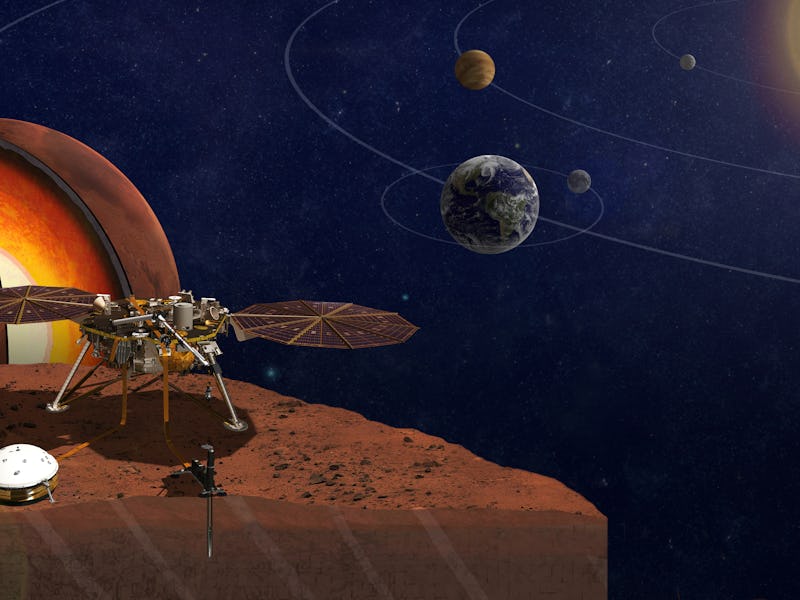NASA's "Marsquake" Detecting Spacecraft Arrives at Launch Site
It will be listening for "marsquakes.'

On Wednesday, NASA’s InSight spacecraft arrived at Vandenberg Air Force Base in California, where it’s scheduled to launch sometime between May 5 and June 8. This Mars mission is already two years behind schedule, but its arrival to its launch site is a sign it’ll be off the ground soon — hopefully.
The craft was shipped from Denver by Lockheed Martin Space to the Buckley Air Force Base in Aurora, Colorado. From there a massive C-17 cargo aircraft airlifted it to Vandenberg.
Join our private Dope Space Pics group on Facebook for more strange wonder.
“The Air Force C-17 crew from the 21st Airlift Squadron gave us a great ride,” said Tom Hoffman, InSight project manager, in a statement. “Next time InSight travels as high and as fast, it will be about 23 seconds into its launch, on the way to Mars.”
Personnel supporting NASA's InSight mission to Mars load the crated InSight spacecraft into a C-17 cargo aircraft at Buckley Air Force Base, Denver, for shipment to Vandenberg Air Force Base, California.
The spacecraft will be propelled into space aboard a United Launch Alliance Atlas V-401 rocket. From there, it will make its way to the red planet to study its interior in order gather data about how rocky planets, like Earth, formed in our solar system billions of years ago.
InSight is a single stationary lander that will pick up the seismic waves created by marsquakes — you know, like earthquakes, but on Mars — to map the planet’s interior. These waves travel through and bounce off of geological materials at different speeds, giving scientists a look at Mars’s inner layers.
This artist's concept from August 2015 depicts NASA's InSight Mars lander fully deployed for studying the deep interior of Mars.
This will give scientists an idea of the size, thickness, and density of the Martian core, mantle, and crust, giving them further information regarding the evolutionary process of terrestrial planets. The intelligence gathered by this mission could hold the key to further understanding how our own planet was created.
If all goes according to plan, NASA will have its very own seismograph beaming it data from a world roughly 34 million miles away, which they can then use to better understand our own planet. After all, no matter how great the distances separating the rocky inner planets, they all share the same cosmic heritage.